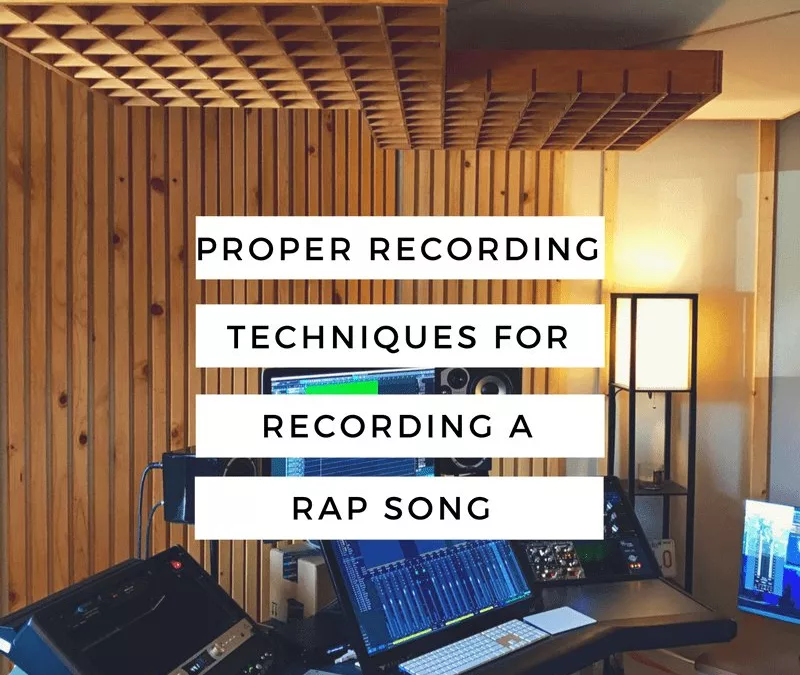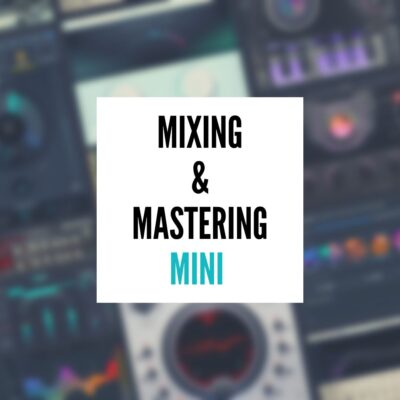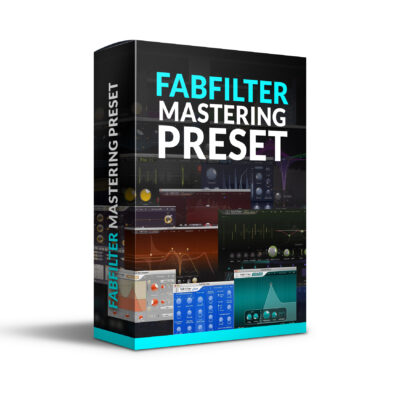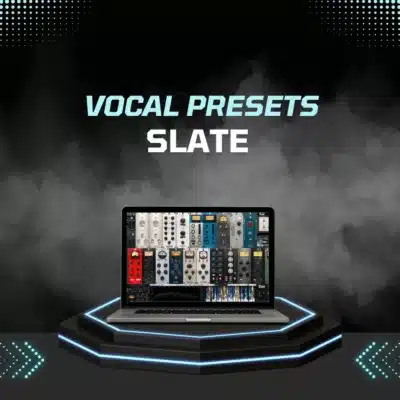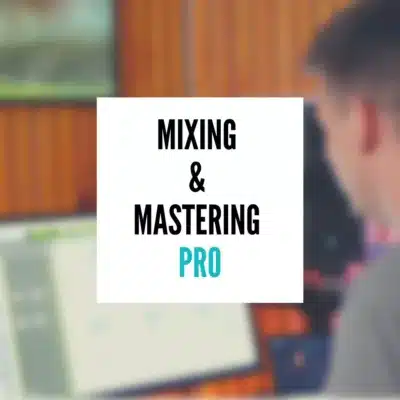There’s something uniquely frustrating about getting a vocal to sit just right in a mix. You’ve nailed the performance, the mic chain is solid, but somehow it still sounds like it’s floating on top of the track—or worse, buried beneath it. We’ve all been there.
Over the years, I’ve mixed everything from raw bedroom recordings to vocals cut in multi-million-dollar studios, and I can tell you this: great vocal mixes aren’t just about having expensive gear or the latest plugins—they’re about knowing how to use what you’ve got.
In this post, I’m breaking down five essential techniques that I rely on in nearly every vocal mix I do, whether it’s for a major label pop artist or an indie singer-songwriter recording in their closet. These aren’t abstract theories. These are the real, actionable moves that help vocals sound polished, emotionally engaging, and glued into the track.
Whether you’re just starting out or have years behind the console, this walkthrough will help tighten your workflow, sharpen your ears, and hopefully save you from chasing your tail with endless tweaks. Let’s get into it.
Start with EQ: Clean Before You Color
If there’s one place to start every vocal mix, it’s EQ. And no, I’m not talking about diving straight into fancy analog emulations with pretty curves and saturation options. I’m talking about cleaning up the junk—getting rid of what doesn’t need to be there so the good stuff can shine through.
Most vocals have some low-end rumble or mic stand noise lurking down below 80 Hz. It’s not musical, it’s just mud. So the first move is usually a high-pass filter—nothing drastic, just enough to clear space without thinning out the tone. I’ll often start around 80–100 Hz, then adjust depending on the voice and how much weight I want to preserve.
Then it’s about finding and dealing with problem areas. Maybe there’s a boxy buildup in the 300–500 Hz range, or a nasal honk around 1–2 kHz. I don’t go hunting just to cut for the sake of cutting—but if something’s distracting or cluttering the vocal, it gets cleaned up.
Once the problem areas are tamed, then I’ll start enhancing. A subtle presence boost around 5–8 kHz can help bring out clarity and articulation, and maybe a touch of “air” up around 10–12 kHz if it suits the genre. But again—this part’s not about sparkle for the sake of sparkle. It’s about shape and intention.
Quick Tip: If you’re not sure where the problem is, try sweeping a narrow boost around while soloed, then dip it out when you find that annoying frequency. Just don’t forget to listen in context with the full mix—what sounds harsh soloed might actually help the vocal cut when the drums and instruments come in.
EQ isn’t magic. But used intentionally, it’s the first major step in making a vocal sound like it belongs in the song, not just on top of it.
Control with Compression: Shape the Performance, Don’t Flatten It
Once EQ has cleaned the path, compression is where we start sculpting the energy. And I don’t mean slamming everything into a lifeless block—this is about shaping dynamics so the vocal feels consistent and emotionally present from start to finish.
A well-performed vocal still has natural volume swings—some phrases are too soft, some jump out and poke you in the ear. Compression helps smooth those peaks and lift the quieter moments without killing the vibe. The key is transparency. You want control, not a straitjacket.
I’ll usually start with a gentle ratio—something like 3:1 or 4:1—and a threshold that kisses the louder peaks. Attack time is crucial: too fast and you’ll squash the transients and kill the energy; too slow and the compressor won’t catch what you need. I’m often around 10–30ms on attack and 50–100ms on release, depending on the tempo and vocal style.
But here’s the real move: don’t rely on just one compressor to do all the work. I’ll often stack two—maybe an LA-2A-style optical for smooth, slow gain riding, followed by an 1176 or a cleaner VCA for faster transient control. This lets each unit handle a different job, and the result is way more natural than leaning on one comp to do everything.
And let’s not forget parallel compression. Blending in a compressed duplicate of the vocal under the original can thicken things up without losing dynamics. I keep the parallel channel darker and warmer, sometimes filtered on top, so it fills the body without adding harshness.
Quick Tip: Listen to how the compressor breathes with the vocal. If it feels like it’s sucking the life out, ease up. If you don’t notice it working but the vocal sounds smoother—you nailed it.
Compression is where the vocal goes from raw performance to polished presence. When it’s right, you stop thinking about the mix—and start feeling the emotion.
Tame the Sizzle: De-Ess Without Destroying the Detail
Let’s talk sibilance—that sharp “S” or “T” sound that can jump out and slice through your mix like a razor. Every vocalist has some level of it, and when you start adding compression, EQ, and saturation? It can get harsh fast.
Enter the de-esser.
A de-esser is just a specialized compressor that focuses on a narrow band of high frequencies—usually somewhere between 4 kHz and 9 kHz, depending on the voice. The trick is not to overdo it. You want to tame the sibilance, not make the vocal sound like it’s lisping or underwater.
I usually start by soloing the “listen” mode in the de-esser to hone in on the exact frequency range that’s offending. Once I’ve got it, I dial in the threshold just enough to catch the loudest sibilants. I’m not trying to crush every “S” flat—just make the worst ones less aggressive.
Here’s a pro move: sometimes I’ll use two de-essers—one early in the chain doing gentle, broad de-essing, and another one later targeting any harshness that pops up after compression or saturation. It’s more transparent than using one de-esser doing all the heavy lifting.
And don’t forget: manual de-essing is still a thing. If there’s one or two particularly nasty sibilants, I’ll just automate the clip gain down or manually notch the EQ for a word or two. It’s old-school, but it works.
Quick Tip: If your de-esser is making the vocal sound dull or lispy, back off. You might be clamping down too hard, or you’re targeting the wrong frequency range.
When done right, de-essing doesn’t just smooth the top end—it makes room for the vocal to shine without fighting the cymbals, synths, or guitars. It’s a small move that makes a big difference in polish.
Add Depth with Reverb and Delay: Space Without the Smear
This is where a lot of home mixes fall apart. The vocal sounds okay dry, but once you add space, it either gets buried in a washy mess—or ends up sounding like it’s singing from the bottom of a canyon. Reverb and delay can make a vocal feel three-dimensional, but only if you use them with intention.
First off: don’t just slap on a long reverb preset and hope it glues everything together. That’s how you end up with a soupy vocal that feels disconnected from the track. Instead, think of reverb and delay as tools for placing the vocal in a space—big or small, up close or set back.
For reverb, I tend to use a short plate or room setting on most modern vocals. Just enough to add a sense of space without smearing articulation. Sometimes I’ll roll off the low end and top end with an EQ after the reverb to keep it tucked in the mix—cut below 200 Hz and above 8–10 kHz, depending on the vibe.
Delay is where the magic really happens. A short slap delay (80–120 ms) can widen the vocal and add thickness without sounding like an obvious echo. Then I might add a longer quarter-note or eighth-note delay for movement—usually synced to the tempo and ducked with a sidechain so it gets out of the way when the vocal is present.
Pro Move: I like to automate delay throws—little bursts of delay on the last word of a line, or to emphasize transitions. You get that sense of depth when it matters without cluttering the whole vocal.
Quick Tip: Treat your time-based effects like textures, not just plugins. Filter them, compress them, automate them. Make them feel like they belong in the mix—not just bolted on.
When done right, reverb and delay don’t just add space—they enhance the emotional impact of the performance. They create a world around the vocal instead of just putting it in a box.
Automate Everything: Mix Like a Human, Not a Loop
You ever listen to a mix and think, “This sounds fine, but… lifeless”? That’s usually because everything’s been treated statically. Same volume, same effects, same everything from start to finish. But a great vocal mix moves. It breathes. It reacts to the music.
That’s where automation comes in.
Volume automation is the most obvious—and the most important. Even with compression doing its thing, there’s always little dips and peaks that need to be addressed manually. I’ll go in and ride the faders like I’m mixing live, bringing up quiet phrases, pushing key words forward, or pulling back breathy moments that get too hot.
But it doesn’t stop at volume. I’ll automate EQ if a certain note gets harsh on a held word. I’ll automate reverb and delay to dial them back in a verse and let them bloom in the chorus. Sometimes I’ll even automate the pitch correction strength—lighter on emotional phrases, tighter on fast rhythmic sections.
Pro Tip: Don’t just automate to fix problems—automate to tell a story. Push the energy forward in the chorus, pull it back in an intimate bridge. You’re not just mixing—you’re performing with the fader.
Automation is what separates a mix that’s technically correct from one that feels alive. It’s where your instincts as an engineer meet your taste as a musician. And honestly? It’s where a lot of the magic happens.
Conclusion: The Polished Vocal Isn’t a Plugin—It’s a Process
There’s no one-button solution to a pro-sounding vocal mix. Trust me, I’ve looked. What really matters is knowing how to use the tools you have—EQ to shape, compression to control, de-essing to smooth, effects to enhance, and automation to breathe life into the performance.
Every vocal is different, and every song asks for something a little unique. But if you follow these five core techniques with intention, you’ll be miles closer to that polished, professional vocal sound you hear on your favorite records.
And hey—if you want to hear these techniques in action, check out the video embedded above. I walk through each one with real examples so you can hear the difference for yourself.
Got questions? Drop them in the comments or shoot me a message. Or if you’re ready to have your vocals professionally mixed, you can hire me here. Let’s make your song sound like a record.

